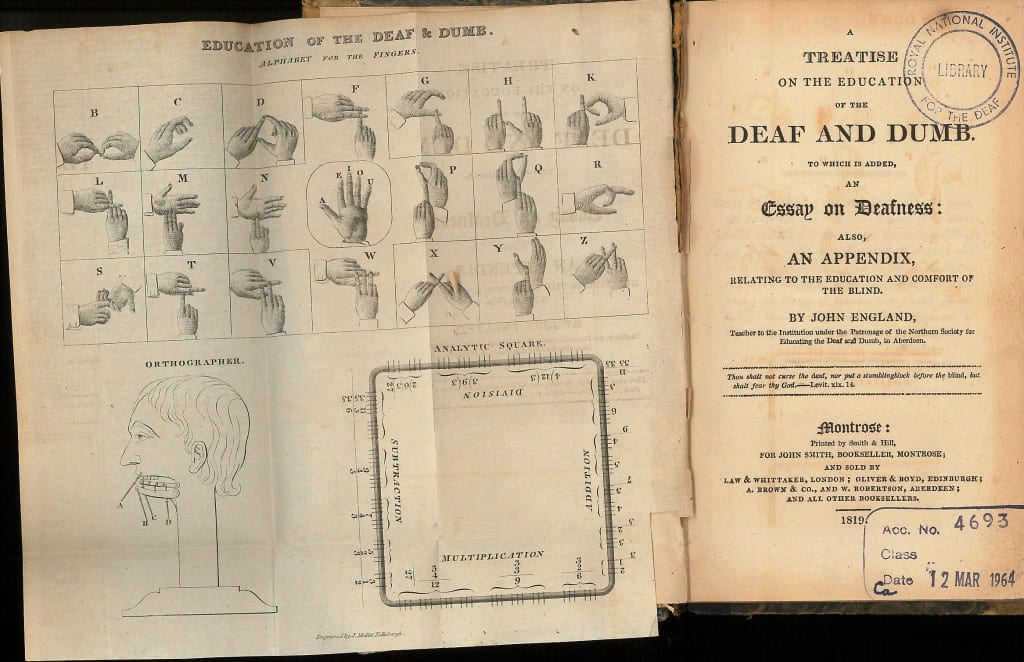A Treatise on the Education of the Deaf and Dumb by John England
By H Dominic W Stiles, on 27 September 2013
In 1819 John England published A treatise on the education of the deaf and dumb. England says (p.vi) “It is not necessary, in this address, to enter into a detail explaining all the means by which I acquired the art of communicating instruction to the Deaf and Dumb: suffice it, therefore, to state in this place, that I have derived my information more from the local situations, and adventitious circumstances in which I was placed in my younger years, than to any systematic instruction received from other teachers.” That is a pity as it would be very interesting to know how he became involved in teaching Deaf children.
England, ‘Teacher to the Institution under the Patronage of the Northern Society for Educating the Deaf and Dumb, in Aberdeen’, set up a day school in Skene Street around 1818. It was a rival of the Aberdeen Institution but was clearly unable to compete.
England praises Sicard but reserves most praise for Moret (p.36-7)
But of all the methods hitherto tried to infuse instruction into the minds of the deaf and dumb, none come up to the experiments of M. de Moret.
M. de Moret, by order of the French government, commenced his labours upon four deaf children in 1813, which he has continued up to the present day. The experiments of M. de Moret are highly interesting to humanity. He has acquired the art of infusing into the minds of his deaf pupils, by means of their eyes, a capability of giving utterance to their thoughts in an intelligible voice ; and without screams, to read in a natural tone, to write to verbal dictation ; and to originate and adapt ideas to things that are proper for them. He has succeeded completely in adding to their natural stock of ideas, and in giving them an exact knowledge of language, and things abstracted from the senses. He has enabled them to converse intelligibly with other men, without putting into requisition any outward signs, whereby to make themselves understood. It is by an attention to the motion of the speaker’s lips in the light, and by touching in the dark, that they are enabled to comprehend his import : and, by these several means, he has given the deaf and dumb facilities of education by no means inferior to those enjoyed by persons who have their faculties perfect. This unexampled success, which appears almost a phenomenon, evinces indubitably, that M. de Moret has arrived at the highest stage of perfection in the art of teaching the deaf and dumb, which has hitherto been attained.
Just after this England says,
I have at present two pupils, the one blind and the other deaf and dumb ; and, strange-as it may appear, they can communicate their ideas to each other by signs and feeling, so as the one can comprehend what the other wants to infuse. The dumb pupil instructs the blind by the sense of feeling, and makes the
latter understand him by touching different parts of his body : and the blind pupil conveys his meaning to the deaf and dumb by signs and outward motions.
If he had only two pupils, clearly this ‘pamphlet’, as he calls it, was an attempt to recruit more, for he goes on to point out potential numbers of Deaf children in Aberdeen.
You can see the book in our collection, or read the full book online via the Charles Baker collection at Gallaudet.
If you know more about John England or his school, do post a comment.
Apologies for the lack of posts over September – holidays intervened and we had a surfeit of posts from the summer exhibition.
 Close
Close


